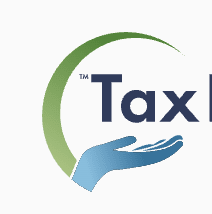
Unlike traditional employees who have taxes automatically withheld, self-employed individuals must plan and pay their income taxes through quarterly estimated payments.
This means you're responsible for both employer and employee portions of Social Security and Medicare taxes—totaling 15.3% of your net income. For complex situations involving multiple income streams or significant deductions, our best tax relief companies can provide expert guidance.
This article will explain how self-employment taxes work, when to make payments, and strategies to minimize your tax burden.
What Is Self-Employment Tax?
Self-employment tax refers to the FICA taxes (Social Security and Medicare) that self-employed workers owe to the IRS. While all US workers pay these taxes, the burden is typically split between employer and employee. Self-employed individuals serve both roles, so they pay both portions.
"Self-employment tax includes a 12.4% Social Security tax and a 2.9% Medicare tax. When you have an employer, you pay 6.2% of your wages in Social Security tax and 1.45% for Medicare taxes, with your employer contributing matching payments. When you're self-employed, you cover both parts," explains Kari Brummond, licensed enrolled agent at TaxCure.
The total FICA tax rate for self-employed individuals is 15.3%, applied to your net self-employment income. Regular income tax is calculated separately according to your tax bracket and added to this amount.
How to Calculate Self-Employment Tax
You must pay self-employment tax if you earn more than $400 in 1099 income during the tax year. The tax applies to 92.35% of your net earnings (income minus business expense deductions).
Income Thresholds and Tax Rates
"The Social Security tax only applies to the first $176,100 of income as of 2025. If your self-employment income exceeds that threshold, you don't owe Social Security tax on earnings over that amount. Medicare, however, applies to all earned income regardless of how much you earn," emphasizes Brummond.
Here's how to calculate self-employment tax:
Step 1: Calculate your net self-employment earnings by subtracting business deductions from gross income.
Step 2: Multiply that amount by 92.35% to get your taxable self-employment earnings.
Step 3: Apply the appropriate tax rates:
- If earnings are $176,100 or less: Multiply by 15.3% for total self-employment tax.
- If earnings exceed $176,100: Calculate Social Security tax (12.4% × $176,100) plus Medicare tax (2.9% × total earnings), then add together.
Self-Employment Tax Calculation Examples
Example 1: $100,000 net income
- $100,000 × 0.9235 = $92,350 (taxable earnings)
- $92,350 × 0.153 = $14,129.55 self-employment tax
Example 2: $200,000 net income
- $200,000 × 0.9235 = $184,700 (taxable earnings)
- Social Security: $176,100 × 0.124 = $21,836.40
- Medicare: $184,700 × 0.029 = $5,356.30
- Total: $21,836.40 + $5,356.30 = $27,192.70 self-employment tax
Estimated Tax Payments
The IRS requires individuals who expect to owe at least $1,000 in taxes to make quarterly estimated tax payments throughout the year.
Penalties for Not Making Estimated Payments
"If you don't pay estimated taxes, the IRS may assess an estimated payment penalty," warns Brummond.
The penalty applies if you don't pay at least:
- 90% of the current year's tax liability, OR
- 100% of the previous year's tax liability (whichever is less)
Failing to make these payments is one of the most common tax errors among self-employed individuals, often resulting in unexpected penalties and interest charges.
How to Calculate Your Quarterly Payments
Your estimated tax calculation depends on your expected annual income.
"If you anticipate owing the same amount this year as the previous year, just send in quarterly payments that are 25% of the amount you owed the previous year. Otherwise, you can estimate your quarterly payments using the worksheet on Form 1040-ES," advises Brummond.
Two calculation methods:
- Same as last year: Divide the previous year's total tax by 4 for each quarterly payment.
- Different income expected: Use Form 1040-ES worksheet to estimate based on projected earnings.
Deductions and Tax Savings
With additional Social Security and Medicare taxes on top of your standard income tax rate, the tax bill for self-employed individuals can get expensive.
How Much to Set Aside for Taxes
"As a general rule of thumb, middle-income tax filers should assume that they'll pay around 25 to 30% of their self-employment income in taxes—that includes both self-employment and income taxes," explains Brummond.
"However, the more you make, the higher the rate can get. If you're in a very high income bracket, you may want to set aside half of your self-employment income for taxes," says Brummond.
Business Expense Deductions
You may be able to reduce your taxable income with deductions for business expenses.
"Business expenses play a massive role in reducing self-employment taxes," reminds Brummond.
"The IRS defines business deductions as expenses that are ordinary and necessary for running your business. For instance, that may include inventory, office supplies, rent for a commercial space, payment processing fees and many other costs," adds Brummond.
Tax Deductions for Remote Workers
If you work from home, you may qualify for valuable tax deductions for remote workers. These expenses can include a portion of your rent or mortgage, based on the size of your home office, a portion of your internet bill, and part of your phone bill, if you use them for business.
Bottom Line
If you're self-employed, you need to ensure that you're paying the proper amount of taxes. Otherwise, you could be stuck with a penalty and a large bill come tax season. Keeping accurate records of your self-employment earnings, estimated deductions, and estimated tax payments are all important steps to take to mitigate this possibility.
Frequently Asked Questions
What is the self-employment tax?
Self-employment (SE) tax is the Social Security and Medicare tax that self-employed individuals must pay. It covers the contributions that would normally be split between an employer and employee in a traditional job.
How much is self-employment tax?
The current self-employment tax rate is 15.3% of your net earnings.
Do I pay the full 15.3% myself?
Yes. Unlike employees who split these taxes with their employers, self-employed workers are responsible for both portions. That’s why it feels higher than what you see withheld from a W-2 paycheck.
Do I have to pay self-employment tax on all income?
No. It only applies to net earnings from self-employment (your business income minus business expenses). Passive income, dividends, and certain other types of income are not subject to SE tax.


